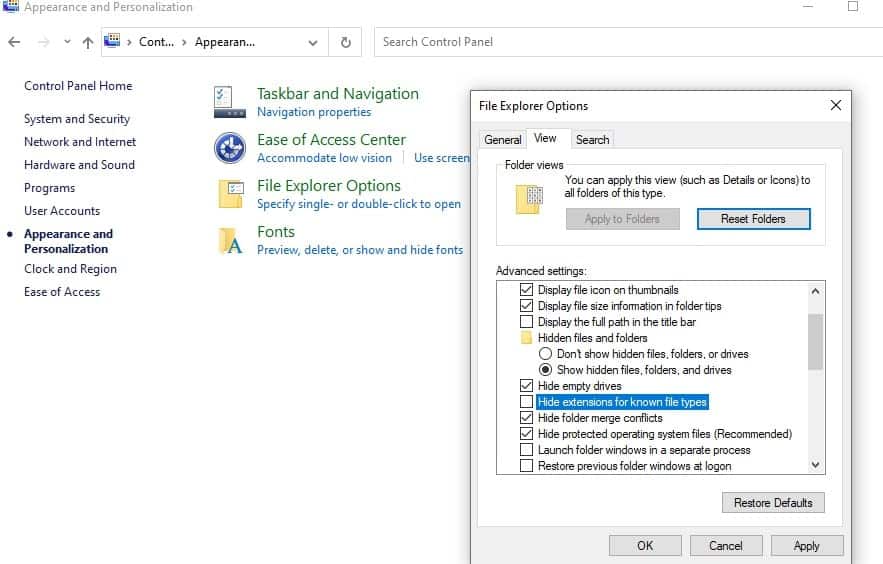The file extensions (such as .txt and .tif and .jpg) are that which identifies the file type. For example, report.doc was created by Microsoft Word and you know this because of the .doc extension. Similarly, silentsong.mp3 can open by an application that handles mp3 files such as a media player, VLC, or iTunes. And .zip can open by an application handles zip files such as WinZip, Winrar, 7-Zip and more. Well, file extensions for known file types are hidden by default, Here in this post how to configure Windows 10 to Show File Extensions and hidden files and folders.
What are File Extensions?
A file extension helps operating system like Windows or Linux to determine which program on your computer the file is associated with. As discussed before the .doc or Docx file extension associated with Microsoft word on your computer, where the .pdf file is associated with Acrobat Reader or PDF reader. Some common file extensions include JPG, PNG, MP4, PDF, MP3, DOC, SVG, INI, DAT, EXE, and dll.
If you have a question on your mind Does Folder have an extension? The answer is No. A directory or folder does not have an extension like a file.
A file extension helps you identify the type of document and allows your computer to run the correct program automatically when you double-click on the file name.
Windows 10 show file extensions
Here different ways to Show File Extensions and hidden files and folders on windows 10.
Using File explorer
- Open File Explorer using Windows key + I, Also you can open File Explorer by double-clicking the program icon in the Task Bar or double-click any folder.
- Select the View tab (Refer to Image Below).
- Next, click the “File name extensions” check box to show file extensions.
- And You can uncheck the box to hide file extensions.
Also, you can checkmark on Hidden items there to show hidden files and folders on Windows 10 PC.
Note: This option applies globally to all folders, so you don’t have to manually check or uncheck it again for every folder you open.
Using Folder Options
- If you are using earlier versions of Windows 7 or Vista Open folder options From Control Panel > Appearance and Personalization -> Folder Options (Windows 10 users found File Explorer Options).
- Also, windows 10 users search for File explorer options and select the first result.
- Move to the View tab, under Advanced Settings, you will see the option Hide extensions for known file types. Uncheck this option and click on Apply and OK.
To display file extensions in Windows 7 open Windows Explorer and click the Organise button towards the top left, then choose Folder and search options from the menu.
Click the View tab, scroll down until you find the box marked Hide file extensions for known file types, Untick this.
Now your file names will now come complete with the extensions.
Also read:
